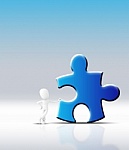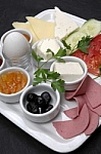
They say that it takes about 28 days to make something you do become a habit. Forming a habit is doing something over and over again. Then I read somewhere that “You learn what you do”. That when you worry day by day, you learn to worry better. That made me think a bit. To me, I am seeing an advantage and at the same time a disadvantage here. A disadvantage is that you allow or let yourself worry day by day and still end up worrying in the end. The advantage is you get the chance to practice worrying differently (and yes maybe worry better in a way) every day. However, I do not really condone worrying every day. I would like to think that you have to stop and deal with it instead of continuing to worry. I mean think about it. What if the subject is procrastination? Does it mean that if you procrastinate every day you learn how to procrastinate better? That does not sound right, right? So, I guess, we need to be careful on what we should be doing day by day that will ensure us that once we do something every day, it will give us an advantage which is to become better at it.
So choose wisely what you do day by day. The key is choose something that will improve you as a person. Maybe like figure out how you deal with a situation or problem. One thing you do not want to happen is to sit there, dwelling and festering, right? You want to be able to resolve a certain problem or situation on a day-to-day basis. Deal with it, find a solution and accept it. Allow yourself to go through the phases but do not get stuck. Find positive things if you want to follow this “You learn what you do” day by day. Say, if you are happy day by day you learn how to be happy better. Or if you want to be positive day by day, you learn how to be positive better. Choose to be better. Choose to deal with things in your life better.

Remember when you were a kid? The first books we had were books with more pictures or drawings than written words. Remember those pop-up books? I remember enjoying reading them over and over again. I loved looking at the pictures or drawings and learn the story or narration through seeing the picture or drawing and becoming familiar with them. I love those pop-up books and other interactive books where you get to touch something to move a character of object in the book or just feel the different textures. One day when I was looking for the first books I want to read to my baby before she is born and once she is born, I looked for those pop-up ones or the interactive ones since I want her to be able to touch and see things pop out of a book than just seeing drawings or pictures. The books that my mom read to me or gave to me when I was little where the same so I want my baby to experience it as well. With that, when we were little, this is our first taste of visual learning. When you facilitate a training program, you need to keep in mind the learning styles of your trainees. Some take in and learn when you just talk about a subject matter, while others need visual aids to understand more what you are talking about. I would go more for making your training more visual since most of the time, majority of your learners are visual learners. Plus, this gives you freedom to be more creative in presenting your concepts or theories. Another advantage to this is that your learners will appreciate it more that you have given thought and time to your learners' needs and education. You have designed your program for your learners and not for you alone. Some facilitators just settle in discussing a concept or theories without further thought if their learners will understand it the way they do. They would rather do things that are convenient for them rather than for their learners. When you take this road, you will find that your learners will not fully grasp the material during and even at the end of the training. Starting right now, look at how you are presenting your program. Bear in ind, that you may easily understand what you are talking about but ask yourself if your trainees will as you intend to present the material. If the answer you come up with is no or maybe. Then it is time to change your approach. Make it better to make sure that your learners will get that takeaway you want them to get once the training is over.

As a training professional, being flexible and being prepared for just about anything happening (good or bad) is a MUST. I believe that you are a great trainer if you can segue into a topic – gracefully and without offending anyone as you do it – when the discussion ventures into sensitive topics or situations. There are some trainers who are afraid to go into discussions for fear that they will end up treading into sensitive topics or going-ons within the group that they are training. However, these things just happens sometimes and stumbling into them is not all uncommon. It is really up to the trainer to get it all under control. If he or she cannot do this then this spells trouble. In my years of experience, I have been in the same bind for a number of times but I did not let it go out of control and was able to sway the discussion to a more friendlier and safer discussion. How did I do it? For one, trainers need to remain calm themselves and not panic. Some trainers make the mistake of expressing either these two emotions: 1) fear; or 2) anger. Let us talk about fear. Some trainers immediately panic and worry and get scared once the discussion becomes heated. Where the trainees start using accusatory words and tones with each other. Once the trainer starts to panic – it will show on his or her expression and that is the telltale sign that he or she has lost control of the training. Now, let us talk about anger. Some trainers take on an arrogant approach to the situation. They assert themselves in the wrong kind of way showing their tempers brewing both in the words they use, their body language and their expressions. They want to control the situation but they are handling it the wrong way because if they resort to anger, this will leave a very bad impression with the trainees, who as we have established are already in a disposition that you do not want aggravate. Thus, they as trainees will lose interest in listening to whatever else you have to say after that. In training, once you get a discussion started, you as a training professional need to know the following: 1) Beforehand, you need to know that once this discussion starts, you know where it may lead to (put yourself in your trainees' shoes); 2) Knowing that you have an idea where it might lead to, make sure you know how far will you let it go on and when do you take control of it; 3) Acknowledge the discussion such as saying that everyone is entitled to their own opinions that is why we have discussions. Remember to not take sides, be neutral and maybe even point out something good and bad about both views and then leave them to ponder about it; 4) Segue-segues-segue on to the next topic on your training agenda. You could segue by saying you see that any discussion is a healthy discussion, however, we seem to be straying away from the subject at hand so we need to move on. Then proceed back to your training agenda; and 5) Be calm and remain calm as the discussion unfolds. Observe how it is enfolding and recognize when it has gone on long enough. Control the fire before it becomes a flame and people start to get burned. Calmness is the key in controlling dangerous waters you will encounter in your training discussions.

There is learning in our everyday living. If you do not see this, then you need to open your eyes more. I believe that we learn every day and for that we are so fortunate especially if you recognize a learning when it happens to you. Whatever simple task we are engaged in, I feel we always learn something. Whether it is old learning (something you have already known before) or a new one – the point is you recognize that you are learning something! If you were to ask me how to define learning I would take say “Learning is like Cooking.” Do not worry, I am not going to start giving you recipes here... but think about it. When our Moms or Dads or Grandparents taught us to cook, you got first-hand experience and recipes, did you not? Recipes that has been handed down for generations. Some I guess you would call classic. Over the years, your grandmother made a certain dish this way because that is how her mother or grandmother taught her. She used the same ingredients and followed the same cooking methods. Right? Then your mom probably changed it a bit, like perhaps added an alternative ingredient or added some new ones that were not there before and even helped the dish taste even better than before. Now that you are cooking the same dish, you probably got a little inspiration and used different ingredients or added a little twist to the dish and came up with an extraordinary dish from the same simple and basic dish your grandmother or mother did before. Were you able to get my point? You started with a basics – things you have learned before and got used to doing the same stuff for years and yet one day, you find yourself, adding more to the basic and creating a better version of the basic and what is great about it is that you learned to improvise! To create! I love cooking and when I do look for recipes of dishes I grew up eating, I would get different versions of it, from the very old-fashioned, basic recipe to a more elaborate, more newer recipe and yet still come up with a dish I know so well, growing up. To me, learning is like cooking because you either stick to what you know – all these years – or you look to improve on what you already know. You have a choice. Again, do not get me wrong. I am not saying that sticking to the old things you know are bad. Learning old things is good. I think I call re-learning old stuff. I, myself, like to go back and do that at times. What I am saying is, you learn even a lot more if you improve on what you already know and the way to do that is to learn something new about things you already know or even something you have not heard of before. When you do this, you will be proud of yourself and the end result is a better and improved YOU. Think about it.



